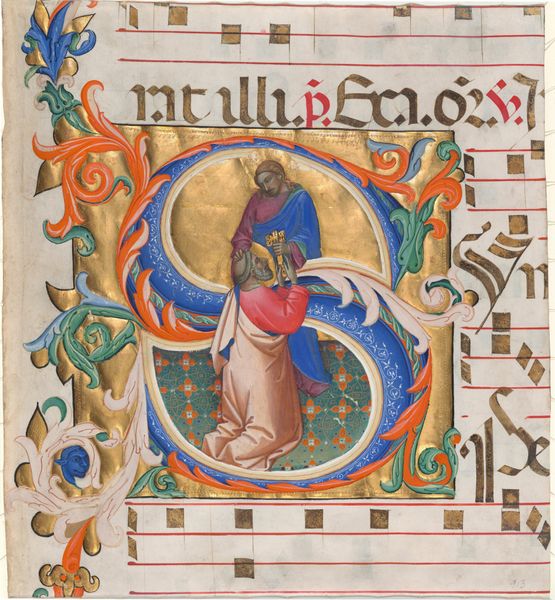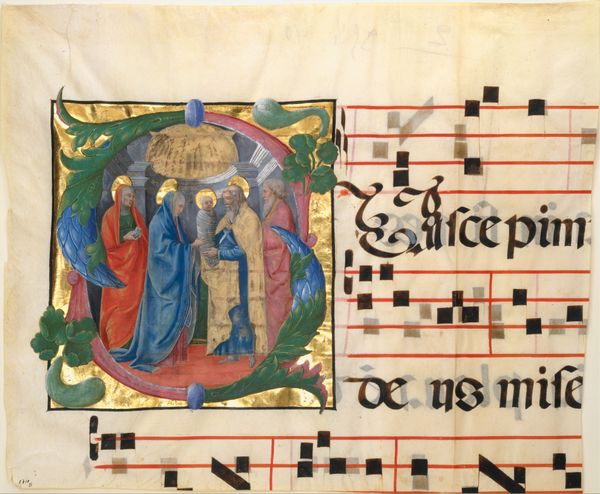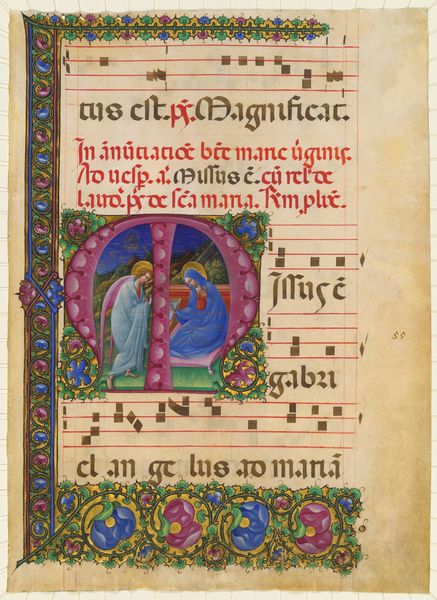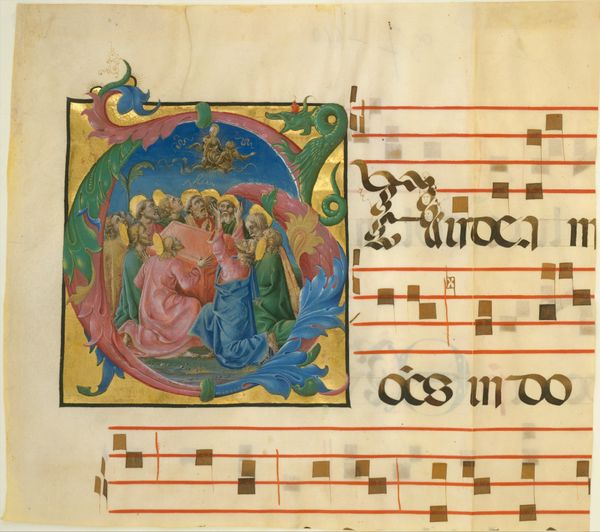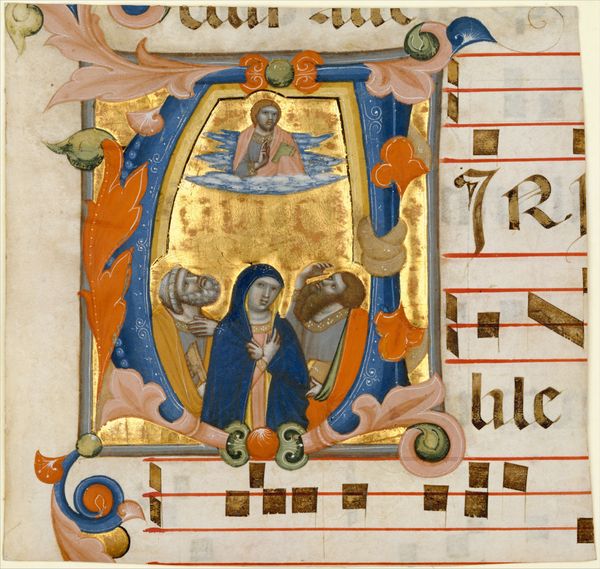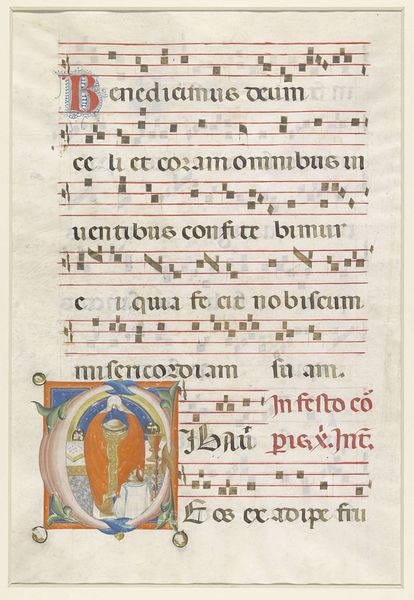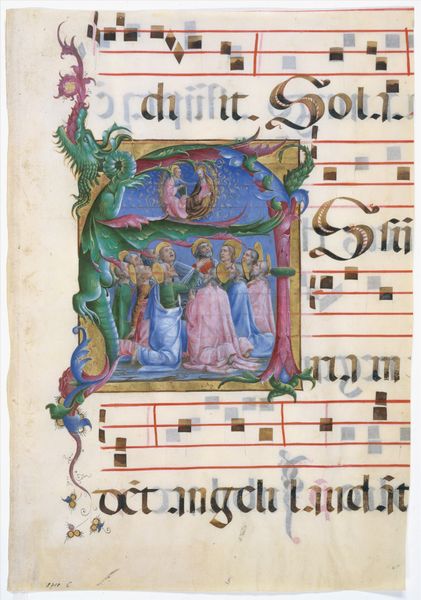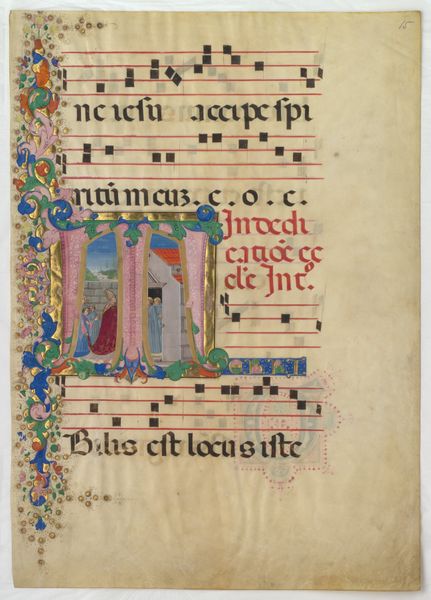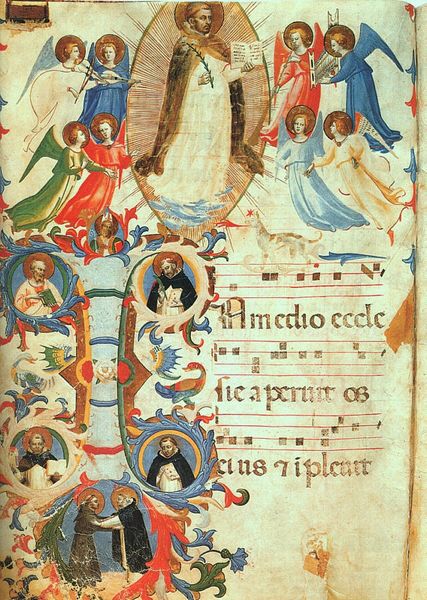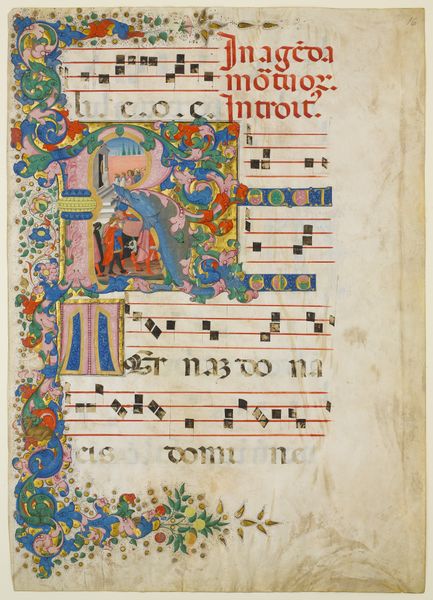
drawing, tempera, painting
#
drawing
#
medieval
#
narrative-art
#
tempera
#
painting
#
figuration
#
coloured pencil
#
international-gothic
#
miniature
#
watercolor
Dimensions: overall: 25.8 x 22.5 cm (10 3/16 x 8 7/8 in.)
Copyright: National Gallery of Art: CC0 1.0
Editor: This is "Birth of John the Baptist," by Niccolò di Giacomo da Bologna, created around the late 14th century using tempera. It's a beautiful miniature painting with a rich color palette, but I'm struck by how the scene is contained within this initial 'L,' almost as if the story is blooming from the text itself. What do you make of this piece? Curator: This piece presents a fascinating insight into the material culture of the late 14th century. Consider the tempera itself—a binding agent like egg yolk mixed with pigment. Its use signals not only a dedication to craftsmanship, but also a specific understanding of material availability and artistic labor within Bologna at the time. How do you think the placement of the image in the "L" affects how it was received at the time, when placed alongside text and music? Editor: Well, it emphasizes the importance of illuminated manuscripts in disseminating stories, almost like an early form of visual storytelling woven into religious texts. And maybe the labor was a devotional act as much as artistic? Curator: Exactly. And think about the gold leaf highlighting. It wasn't merely decorative; it reflected light, quite literally illuminating the word of God, and underscoring the economic investment and the power structures supporting its production. This was not a mass-produced item, but something commissioned and treasured. The intense colors also point towards the accessibility of expensive pigments like Lapis Lazuli, pointing towards wealth of its patrons. Editor: That’s a great point. So, beyond the narrative itself, the materials and labor involved communicate status and religious devotion. Is the medium itself is the message? Curator: In a way, yes. By analyzing the "how" of its making—the material choices, the skill involved, and the context of its production, we uncover layers of meaning often overlooked in traditional art historical analysis. Think about how contemporary artists often engage with similar themes, yet with completely different materials and processes. Editor: I see what you mean! It’s like the story of the birth is just the starting point. It makes you think about who paid for the art, who made it, and what the whole object signified in its time. Thanks for helping me appreciate that! Curator: My pleasure. Considering the materiality reframes our understanding entirely and enhances the experience, revealing social dynamics otherwise veiled.
Comments
No comments
Be the first to comment and join the conversation on the ultimate creative platform.
